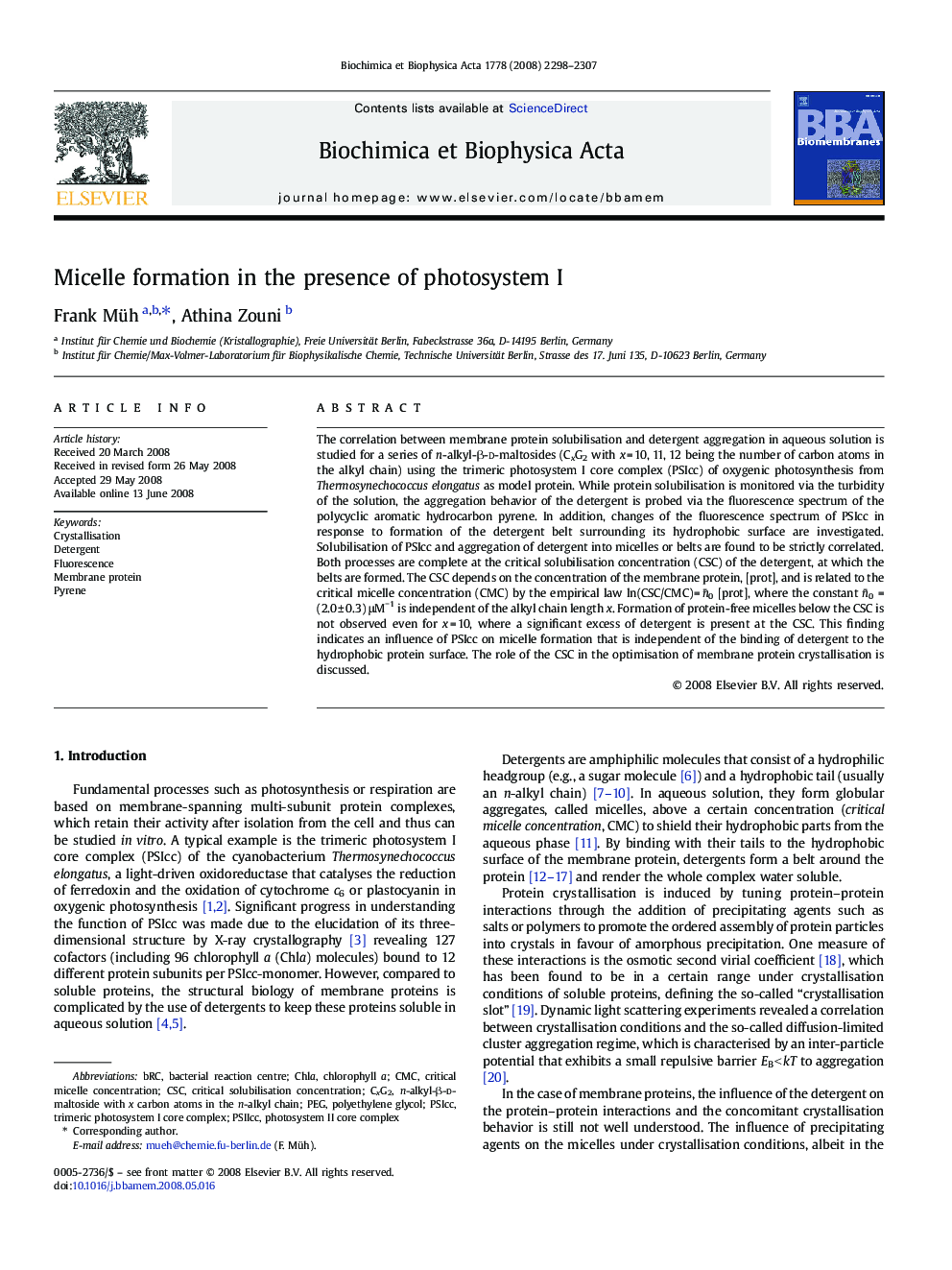| Article ID | Journal | Published Year | Pages | File Type |
|---|---|---|---|---|
| 1945469 | Biochimica et Biophysica Acta (BBA) - Biomembranes | 2008 | 10 Pages |
The correlation between membrane protein solubilisation and detergent aggregation in aqueous solution is studied for a series of n-alkyl-β-d-maltosides (CxG2 with x = 10, 11, 12 being the number of carbon atoms in the alkyl chain) using the trimeric photosystem I core complex (PSIcc) of oxygenic photosynthesis from Thermosynechococcus elongatus as model protein. While protein solubilisation is monitored via the turbidity of the solution, the aggregation behavior of the detergent is probed via the fluorescence spectrum of the polycyclic aromatic hydrocarbon pyrene. In addition, changes of the fluorescence spectrum of PSIcc in response to formation of the detergent belt surrounding its hydrophobic surface are investigated. Solubilisation of PSIcc and aggregation of detergent into micelles or belts are found to be strictly correlated. Both processes are complete at the critical solubilisation concentration (CSC) of the detergent, at which the belts are formed. The CSC depends on the concentration of the membrane protein, [prot], and is related to the critical micelle concentration (CMC) by the empirical law ln(CSC/CMC) = n¯0 [prot], where the constant n¯0 = (2.0 ± 0.3) μM−1 is independent of the alkyl chain length x. Formation of protein-free micelles below the CSC is not observed even for x = 10, where a significant excess of detergent is present at the CSC. This finding indicates an influence of PSIcc on micelle formation that is independent of the binding of detergent to the hydrophobic protein surface. The role of the CSC in the optimisation of membrane protein crystallisation is discussed.
